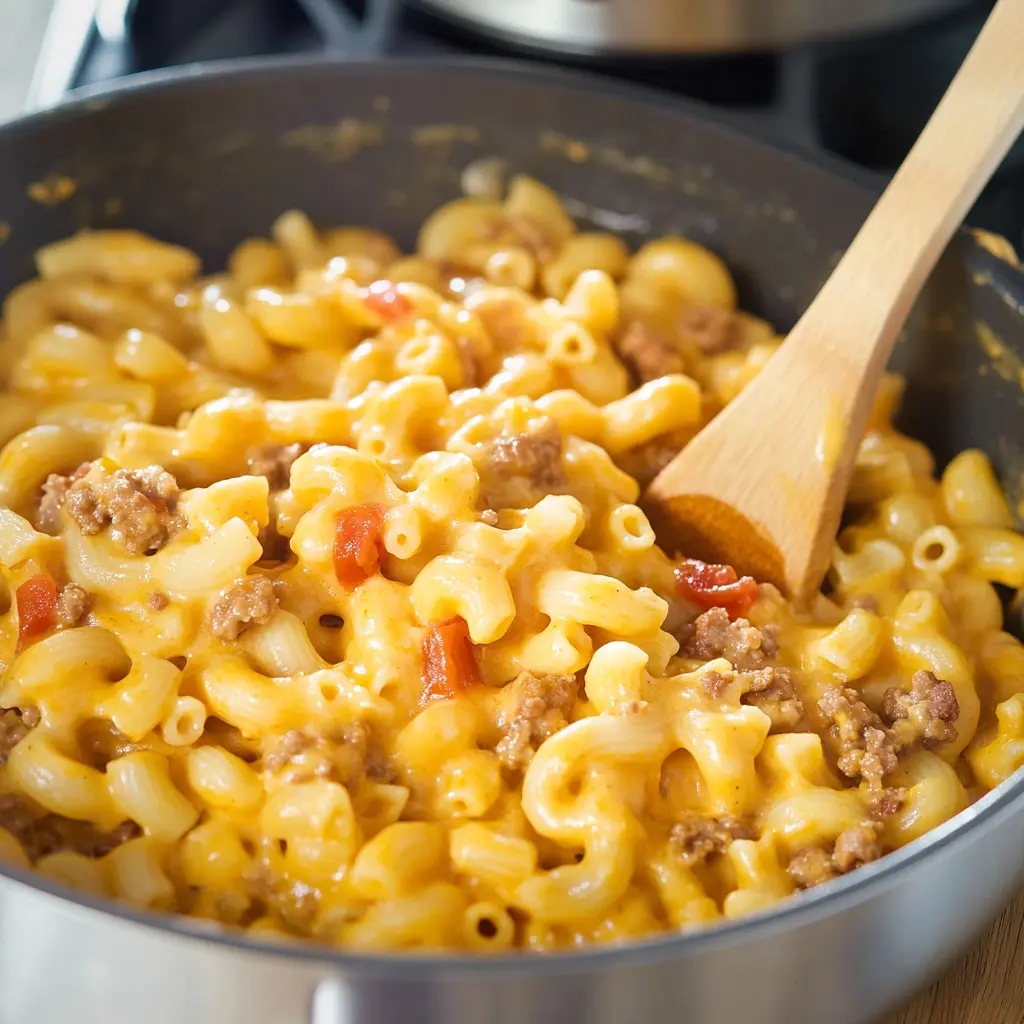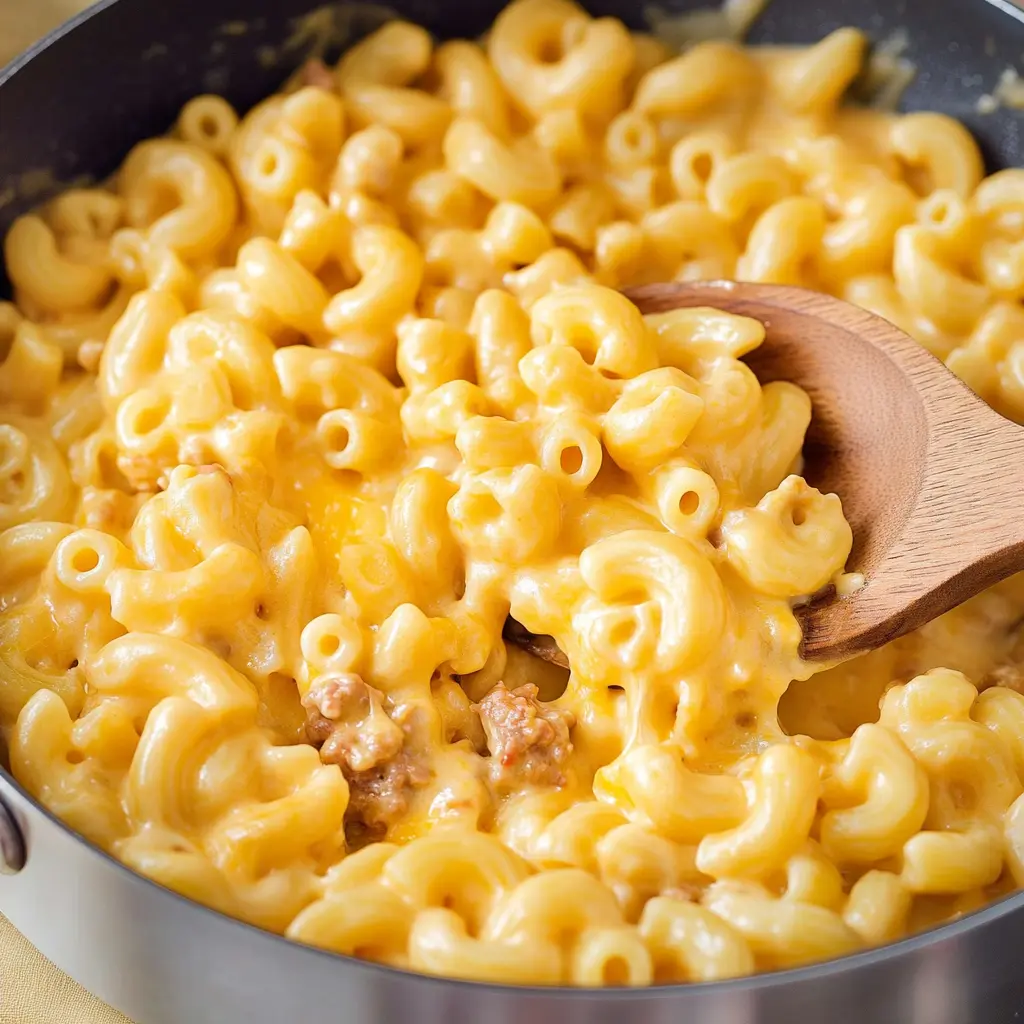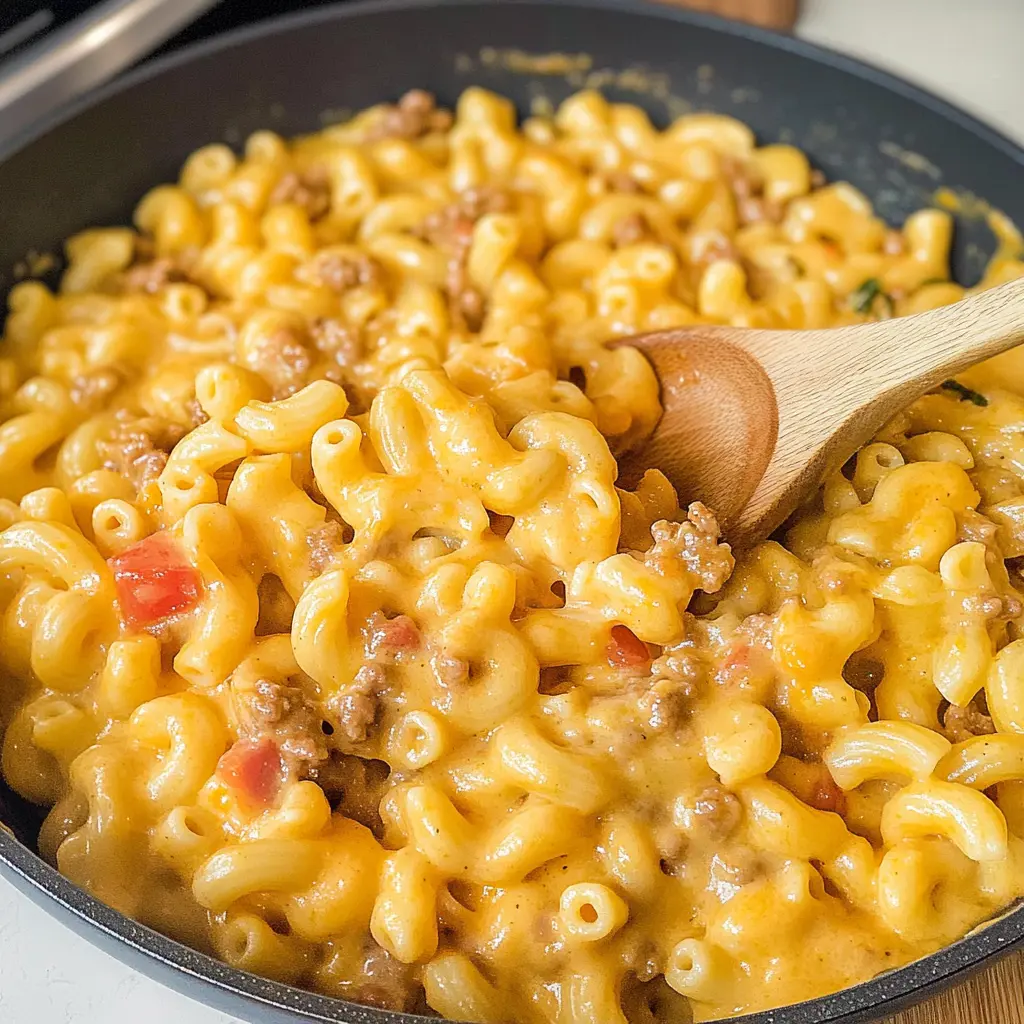Introduction
Mac and cheese is a beloved comfort food, cherished for its creamy, cheesy goodness. However, achieving and maintaining that perfect creamy texture can sometimes be tricky. Often, mac and cheese turns out dry or grainy instead of luscious and smooth. In this ultimate guide, we will explore the secrets to keeping mac and cheese creamy, covering essential ingredients, techniques, and common pitfalls. Whether you’re a novice cook or a seasoned chef, these tips and recipes will ensure your mac and cheese remains indulgently creamy every time.
Understanding the Basics of Creaminess
The Science Behind Creamy Mac and Cheese
Understanding the science behind creamy mac and cheese is key to mastering this dish. The creaminess largely depends on the right balance of fat, moisture, and starch. Fats, from ingredients like butter and cheese, contribute to the smooth texture by coating the starch molecules and preventing clumping. Moisture, supplied by milk or cream, helps to dissolve the starch granules, creating a cohesive sauce. Starch, primarily from pasta and flour in the roux, thickens the sauce and holds the fat and moisture together.
Common Ingredients for Creaminess
Creating a truly creamy mac and cheese requires specific ingredients. Key components include:
- Milk and Cream: Whole milk, half-and-half, and heavy cream add varying levels of richness and body to the sauce.
- Cheese: Different cheeses melt differently; choosing the right one affects the final texture.
- Butter: Adds fat and flavor, essential for the roux.
- Flour: Used in the roux to thicken the sauce, creating a smooth, creamy consistency.
Importance of Ratios
Balancing liquid and solid ingredients is crucial. Too much liquid can make the sauce runny, while too little results in a dry dish. The ideal ratio involves enough liquid to keep the pasta moist and a sufficient amount of cheese to ensure every bite is creamy. Adjusting these ratios based on the type of cheese and milk used can help achieve the perfect texture.
Ingredients for Creaminess
Choosing the Right Cheese
Selecting the right cheese is vital for achieving a creamy mac and cheese. Not all cheeses melt equally well. For the best results, combine cheeses that melt smoothly and provide a robust flavor. Sharp cheeses, like cheddar, add a tangy bite, while milder cheeses, such as mozzarella or fontina, contribute to the creaminess without overpowering the dish. Experimenting with different combinations can lead to a perfect balance. For more detailed insights, check out our guide on the best cheeses for mac and cheese.
Milk and Cream Options
The type of milk or cream you choose significantly impacts the creaminess and richness of your mac and cheese. Here are some options:
- Whole Milk: A classic choice that provides a good balance of fat and moisture.
- Half-and-Half: Offers a richer texture than whole milk, perfect for a creamier sauce.
- Heavy Cream: Delivers the ultimate creamy consistency, making the dish indulgent and smooth.
For a unique twist and enhanced creaminess, you might explore recipes featuring white cheddar, detailed in our white cheddar mac and cheese guide.
Butter and Flour
Butter and flour form the foundation of the roux, which is essential for a smooth, thick cheese sauce. The roux not only thickens the sauce but also helps to integrate the cheese, preventing it from becoming stringy. Here’s how they contribute:
- Butter: Adds fat and flavor, creating a rich base for the sauce.
- Flour: When cooked with butter, flour creates a paste that thickens the sauce, ensuring a velvety texture.
For those with dietary restrictions, consider trying gluten-free alternatives. Our article on gluten-free mac and cheese offers valuable insights.
Enhancing with Additional Ingredients
To elevate the flavor and creaminess of your mac and cheese, consider adding the following ingredients:
- Mustard: A touch of mustard enhances the cheese flavor without making the dish taste overtly mustardy. It adds a subtle depth that complements the cheese.
- Eggs: Incorporating eggs can create a custard-like texture, adding richness and helping to bind the sauce together.
- Evaporated Milk: This ingredient provides a creamy texture without the heaviness of cream, making the sauce smoother and more cohesive.
By experimenting with these ingredients, you can achieve a variety of flavors and textures, ensuring your mac and cheese is always creamy and delicious.
Techniques to Maintain Creaminess
Cooking the Pasta
Achieving the perfect creamy mac and cheese begins with cooking the pasta correctly. Here are key considerations:
- Importance of Undercooking Pasta: Slightly undercooking the pasta, or cooking it al dente, is crucial. This method allows the pasta to absorb some of the sauce’s moisture as it continues to cook, preventing it from becoming mushy. Ideally, cook the pasta 1-2 minutes less than the package instructions.
- Salting the Water Properly: Properly salting the pasta water is essential for flavor. The water should be as salty as the sea, which helps to season the pasta from the inside out, enhancing the overall flavor of the dish. Use about 1-2 tablespoons of salt per gallon of water.
Making the Sauce
Creating a creamy cheese sauce involves several critical steps. Follow these steps to ensure a smooth, luscious sauce:
- Making the Roux: Begin by melting butter in a saucepan over medium heat. Once melted, add an equal amount of flour (usually 2 tablespoons each of butter and flour) and whisk continuously. Cook the mixture for about 2-3 minutes until it forms a smooth paste and begins to turn golden, which removes the raw flour taste.
- Adding Liquid: Gradually whisk in milk or cream, ensuring there are no lumps. Start with a small amount of liquid to thin the roux, then slowly add the rest while continuing to whisk. This method helps to prevent lumps and creates a smooth base for the cheese sauce.
- Melting the Cheese: Reduce the heat to low before adding the cheese to prevent curdling. Add the cheese in small handfuls, stirring each addition until fully melted before adding more. This gradual process ensures the cheese melts smoothly into the sauce without separating.
Tips to Avoid Curdling
Curdling occurs when the proteins in the milk or cheese separate due to excessive heat or acidity. To avoid this:
- Moderate Heat: Keep the heat at a low to medium level when adding dairy products. High heat can cause the proteins to denature and separate.
- Stir Constantly: Continuous stirring helps to distribute the heat evenly and prevents the sauce from sticking to the bottom of the pan.
- Use Fresh Cheese: Freshly grated cheese melts more smoothly than pre-shredded cheese, which often contains anti-caking agents that can cause clumping.
For more tips on perfecting your cheese sauce, check out our guide on how to doctor up white cheddar mac and cheese.
Combining Pasta and Sauce
Timing and technique are crucial when combining pasta and sauce:
- Timing: Combine the pasta and sauce while both are still hot to ensure even coating. If the pasta cools down too much, it won’t absorb the sauce as well.
- Technique: Gradually add the pasta to the sauce rather than the other way around. This method allows you to control the ratio and ensures the pasta is evenly coated.
Baking Tips
Baking mac and cheese can dry it out if not done correctly. Here are some tips to maintain creaminess:
- Covering with Foil: Cover the baking dish with foil during the first part of baking to trap moisture and prevent the top from drying out.
- Adding Extra Cheese: Sprinkle additional cheese on top before baking. This layer not only adds flavor but also helps to insulate the mac and cheese, keeping the inside creamy.
- Lower Temperature: Bake at a lower temperature (around 350°F) to ensure the mac and cheese heats through evenly without drying out.
Stovetop Methods
For maximum creaminess, consider stovetop-only recipes. These recipes often result in a smoother texture as the sauce doesn’t dry out in the oven:
- Constant Stirring: On the stovetop, continuously stir the mac and cheese to ensure even heating and prevent sticking.
- Adjusting Consistency: If the sauce thickens too much, you can easily adjust the consistency by adding a splash of milk or cream.
For a unique twist with a stovetop approach, adding a smoky flavor can be delightful. Explore our smoked mac and cheese guide for more details.
By following these techniques, you can ensure your mac and cheese remains creamy and delicious, whether you prefer it baked or prepared entirely on the stovetop. Each method has its own nuances, but with careful attention to detail, you can achieve a perfectly creamy mac and cheese every time.
Common Mistakes and How to Avoid Them
Overcooking Pasta
Consequences: Overcooking pasta can lead to a mushy texture, causing it to break down and absorb too much sauce. This results in a less creamy and more stodgy dish.
Solutions: Cook the pasta al dente, or slightly undercook it by 1-2 minutes less than the package instructions. This way, the pasta will continue to cook slightly when mixed with the hot sauce, ensuring it retains a firm texture and doesn’t become mushy.
Using Low-Fat Ingredients
Impact on Creaminess: Low-fat ingredients, such as skim milk or reduced-fat cheese, lack the necessary fat content to create a rich and creamy sauce. The result is often a watery or grainy texture.
Solutions: Use full-fat ingredients like whole milk, half-and-half, and regular cheese for the best results. The fat content is essential for creating a smooth, velvety sauce. If you’re concerned about calories, consider using a mixture of whole milk and half-and-half to balance richness and caloric content.
Skipping the Roux
Why It Matters: The roux (a mixture of butter and flour) is crucial for thickening the sauce and ensuring a smooth texture. Skipping this step can result in a thin, watery sauce that doesn’t adhere well to the pasta.
Solutions: Always start with a roux to thicken the sauce. Cook the butter and flour together until it forms a smooth paste, then gradually whisk in the milk or cream. This process creates a stable base for the cheese sauce, preventing it from becoming runny or separating.

Not Using Enough Cheese
Importance of Generous Cheese Portions: Cheese is the star of mac and cheese, and skimping on it can result in a bland, less flavorful dish. Insufficient cheese also means less fat, which is essential for a creamy texture.
Solutions: Be generous with the cheese. Use a mix of cheeses that melt well and complement each other in flavor. A good rule of thumb is to use at least 2 cups of cheese for every pound of pasta. Adding more cheese not only enhances the flavor but also contributes to the creamy consistency that makes mac and cheese so indulgent.
By avoiding these common mistakes and following these solutions, you can ensure your mac and cheese turns out perfectly creamy and delicious every time.
Recipe Variations for Creamy Mac and Cheese
Classic Creamy Mac and Cheese
A traditional mac and cheese recipe delivers that quintessential creamy texture everyone loves. Here’s a simple yet indulgent recipe:
Ingredients:
- 2 cups elbow macaroni
- 2 cups whole milk
- 1 cup heavy cream
- 2 cups shredded sharp cheddar cheese
- 1 cup shredded mozzarella cheese
- 4 tablespoons butter
- 2 tablespoons all-purpose flour
- Salt and pepper to taste
Instructions:
- Cook the pasta until al dente, then drain and set aside.
- In a saucepan, melt butter over medium heat. Stir in flour and cook for 2-3 minutes to form a roux.
- Gradually whisk in the milk and cream, ensuring no lumps.
- Once the mixture is smooth and thickened, lower the heat and stir in the cheeses until fully melted.
- Season with salt and pepper, then combine the pasta and sauce. Serve hot and enjoy!
Gluten-Free Creamy Mac and Cheese
For those with gluten sensitivities, gluten-free mac and cheese can be just as creamy and delicious. Adjustments for gluten-free diets ensure everyone can enjoy this comforting dish.
Ingredients:
- 2 cups gluten-free elbow macaroni
- 2 cups whole milk
- 1 cup heavy cream
- 2 cups shredded cheddar cheese
- 1 cup shredded Gruyère cheese
- 4 tablespoons butter
- 2 tablespoons gluten-free flour (such as rice flour)
- Salt and pepper to taste
Instructions:
- Cook the gluten-free pasta until al dente, then drain and set aside.
- In a saucepan, melt butter over medium heat. Stir in gluten-free flour and cook for 2-3 minutes.
- Gradually whisk in the milk and cream, ensuring no lumps.
- Once the mixture is smooth and thickened, lower the heat and stir in the cheeses until fully melted.
- Season with salt and pepper, then combine the pasta and sauce. Serve hot.
For more gluten-free options, explore our gluten-free mac and cheese: Top choices & recipes.
Smoked Creamy Mac and Cheese
Adding a smoky flavor to your mac and cheese can elevate its taste profile, providing a delightful twist to the classic dish.
Ingredients:
- 2 cups elbow macaroni
- 2 cups whole milk
- 1 cup heavy cream
- 2 cups shredded smoked Gouda
- 1 cup shredded cheddar cheese
- 4 tablespoons butter
- 2 tablespoons all-purpose flour
- Salt and pepper to taste
Instructions:
- Cook the pasta until al dente, then drain and set aside.
- In a saucepan, melt butter over medium heat. Stir in flour and cook for 2-3 minutes.
- Gradually whisk in the milk and cream, ensuring no lumps.
- Once the mixture is smooth and thickened, lower the heat and stir in the cheeses until fully melted.
- Season with salt and pepper, then combine the pasta and sauce. Optionally, place the combined mac and cheese in a smoker for an additional 20 minutes to infuse a deeper smoky flavor.
Discover the best smoking techniques in our guide on what wood is good for smoking mac and cheese? Best choices.
White Cheddar Mac and Cheese
For a different flavor profile, white cheddar mac and cheese offers a tangy yet smooth alternative to the classic recipe.
Ingredients:
- 2 cups elbow macaroni
- 2 cups whole milk
- 1 cup heavy cream
- 3 cups shredded white cheddar cheese
- 4 tablespoons butter
- 2 tablespoons all-purpose flour
- Salt and pepper to taste
Instructions:
- Cook the pasta until al dente, then drain and set aside.
- In a saucepan, melt butter over medium heat. Stir in flour and cook for 2-3 minutes.
- Gradually whisk in the milk and cream, ensuring no lumps.
- Once the mixture is smooth and thickened, lower the heat and stir in the white cheddar cheese until fully melted.
- Season with salt and pepper, then combine the pasta and sauce. Serve hot.
For more details on this variation, see our white cheddar mac and cheese guide.
These variations ensure that you can enjoy a creamy, delicious mac and cheese no matter your preferences or dietary needs. Each recipe brings a unique twist to the classic dish, offering something new and exciting.

Conclusion
Achieving and maintaining creamy mac and cheese is all about the right ingredients, techniques, and attention to detail. From selecting the perfect cheeses and dairy products to mastering the roux and avoiding common pitfalls, each step is crucial to creating a luscious, satisfying dish. Whether you prefer a classic recipe, need a gluten-free option, or want to try a smoky or white cheddar variation, these tips and recipes will ensure your mac and cheese remains indulgently creamy every time. Don’t hesitate to experiment and adjust to suit your taste, and enjoy the ultimate comfort food in its creamiest form.
FAQs
How can I prevent my mac and cheese from drying out in the oven?
To prevent drying out, cover the baking dish with foil for most of the baking time, and add extra cheese on top. Baking at a lower temperature, around 350°F, helps retain moisture.
What cheeses are best for a creamy texture?
Cheeses that melt well, like cheddar, mozzarella, Gruyère, and fontina, are ideal. Combining sharp and mild cheeses can provide a rich flavor and smooth texture.
Can I use low-fat milk and still get a creamy mac and cheese?
While possible, using low-fat milk may result in a less creamy texture. Combining low-fat milk with a bit of heavy cream can help maintain creaminess.
How do I reheat mac and cheese to keep it creamy?
Reheat mac and cheese slowly over low heat, adding a splash of milk or cream to restore moisture. Stir frequently to ensure even heating.
What is the secret to making creamy mac and cheese on the stovetop?
The key is a well-made roux, gradual incorporation of cheese, and continuous stirring to prevent curdling. Using full-fat dairy products also enhances creaminess.



